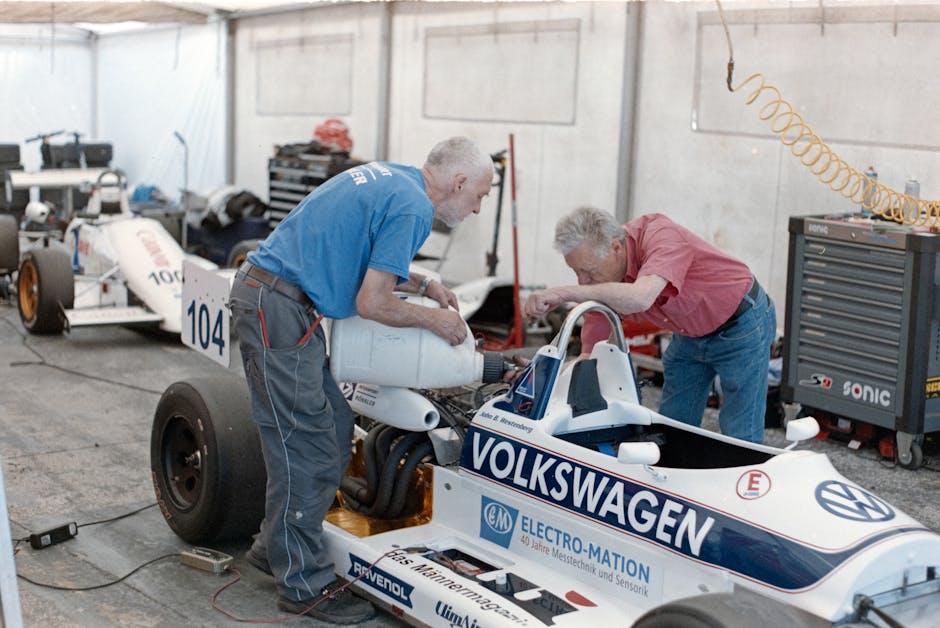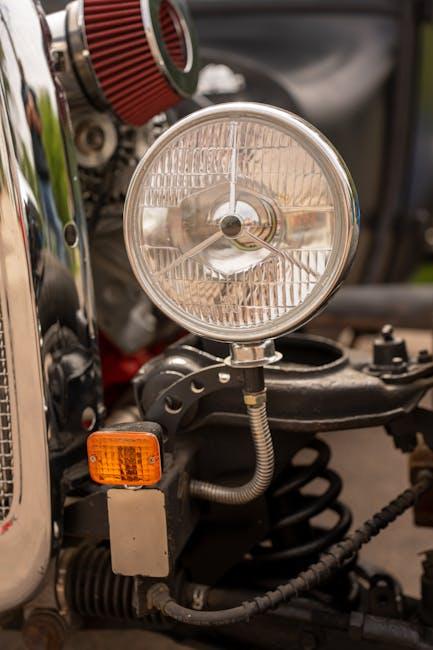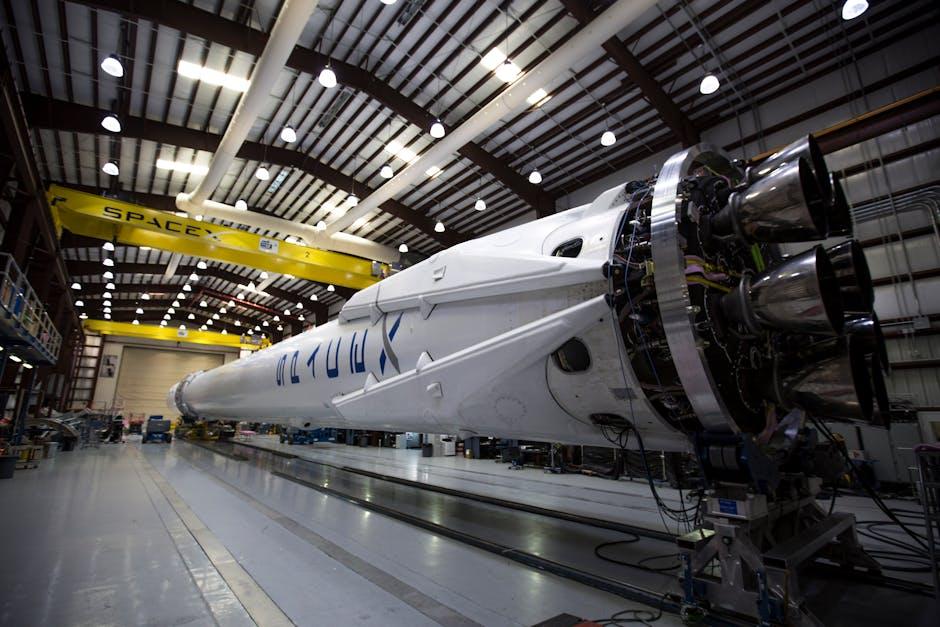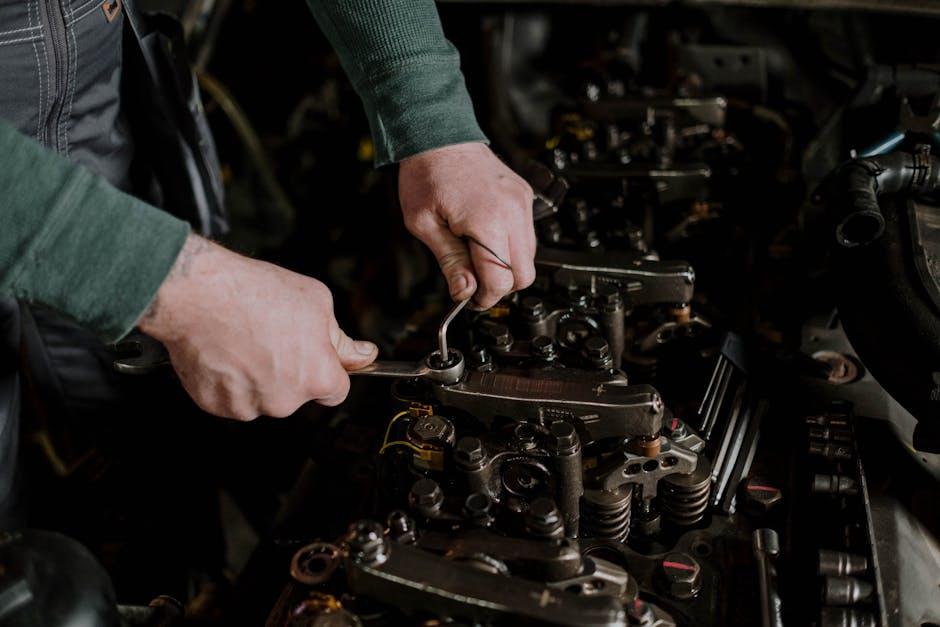Beneath the hood of every vehicle lies a complex symphony of moving parts, working in harmony to deliver power and performance. Keeping your engine running smoothly isn’t just about avoiding breakdowns—it’s about ensuring efficiency, longevity, and a ride that feels as effortless as the very first time you turned the key. Whether you’re a seasoned gearhead or a casual driver, understanding the essentials of engine care can transform your driving experience from routine to remarkable. In this article, we’ll explore practical tips and expert advice to help your engine hum with health and vitality for miles to come.
Table of Contents
- Routine Maintenance Practices for Longevity
- Choosing the Right Engine Oil and Fluids
- Signs of Engine Trouble and When to Seek Help
- The Role of Air Filters in Performance Optimization
- Cooling System Care to Prevent Overheating
- Fuel System Tips for Maximum Efficiency
- Q&A
- Concluding Remarks

Routine Maintenance Practices for Longevity
Establishing a consistent schedule for essential upkeep not only prevents unexpected breakdowns but also extends the life of your engine significantly. Key practices such as regularly checking oil levels, replacing filters, and inspecting belts can help avert wear and tear before it escalates. Incorporating these habits into your routine ensures that your engine remains in optimal condition, delivering smooth and efficient performance mile after mile.
To simplify the process, consider these fundamental maintenance tips:
- Oil Changes: Replace engine oil every 3,000-5,000 miles to maintain lubrication and reduce friction.
- Air Filter Replacement: Change filters every 12,000 miles to ensure clean airflow for combustion.
- Coolant Checks: Regularly test and top off coolant levels to prevent overheating.
- Belt Inspections: Examine for cracks or wear and replace as necessary to avoid sudden failures.
| Maintenance Task | Recommended Interval |
|---|---|
| Oil Change | 3,000 – 5,000 miles |
| Air Filter | Every 12,000 miles |
| Coolant Refill | Every 24,000 miles |
| Belt Check | Every 15,000 miles |

Choosing the Right Engine Oil and Fluids
Selecting the correct engine oil and essential fluids is a vital step in safeguarding your vehicle’s performance and longevity. Every engine has unique needs based on its design, operating conditions, and age. You’ll want to consider factors such as viscosity grade, oil type (synthetic, conventional, or blended), and manufacturer specifications to ensure optimal protection. Ignoring these details could lead to inefficient lubrication, increased wear, and ultimately costly repairs.
To simplify the choice, here’s a quick reference for common oil viscosities and their ideal conditions:
| Oil Grade | Temperature Range | Best For |
|---|---|---|
| 5W-30 | -20°C to 30°C | General use, fuel efficiency |
| 10W-40 | -10°C to 40°C | Older engines, higher mileages |
| 0W-20 | -30°C to 25°C | Cold climates, newer engines |
Remember, oil isn’t the only fluid to consider. Transmission fluid, brake fluid, coolant, and power steering fluid all play essential roles in maintaining smooth operation. Always consult your vehicle’s manual and opt for high-quality products that meet or exceed industry standards for the best results.

Signs of Engine Trouble and When to Seek Help
Recognizing when your engine is signaling distress can save you from costly repairs and unexpected breakdowns. Pay close attention to unusual noises such as knocking, ticking, or grinding, as these often indicate internal wear or damage. Other common warning signs include:
- Excessive smoke of different colors (blue, black, or white) from the exhaust
- Engine misfires or rough idling that disrupts smooth acceleration
- Warning lights on the dashboard, especially the check engine light
- Loss of power or poor fuel economy that suddenly emerges
Knowing when to act quickly is just as crucial as recognizing the symptoms. Below is a simple guideline to help you understand when to seek professional help versus monitoring the situation yourself:
| Symptom | Immediate Action | Recommended Response |
|---|---|---|
| Loud knocking sound | Stop driving immediately | Tow to mechanic for inspection |
| Check engine light on | Scan for error codes | Schedule service if codes persist |
| Minor rough idle | Observe engine performance | Check spark plugs and air filter |
| Unusual exhaust smoke | Note smoke color | Consult mechanic promptly |

The Role of Air Filters in Performance Optimization
Maintaining a clean and efficient airflow is crucial to maximizing your engine’s performance. Air filters act as the first line of defense, preventing dust, dirt, and other harmful particles from entering the combustion chamber. When your air filter is clogged or dirty, it restricts air intake, which can cause the engine to work harder, reduce fuel efficiency, and ultimately lead to decreased power output. Regular inspection and replacement of air filters ensure your engine breathes freely, optimizing combustion and enhancing throttle response.
Key benefits of a high-quality air filter include:
- Improved fuel economy: Cleaner air means better fuel mixing and more efficient combustion.
- Enhanced engine lifespan: Prevents abrasive particles from causing premature wear inside the engine.
- Increased horsepower and acceleration: Unrestricted airflow helps your engine perform at its peak.
| Air Filter Type | Filtration Efficiency | Maintenance Interval |
|---|---|---|
| Paper | Moderate | 12,000 miles |
| Foam | Good | 10,000 miles |
| Cotton Gauze | High | 20,000 miles (washable) |

Cooling System Care to Prevent Overheating
Maintaining the cooling system is essential for engine longevity and performance. Regularly check the coolant level and quality, making sure to use the correct type specified by your vehicle’s manufacturer. Flushing the system periodically helps remove rust, scale, and debris that can clog the radiator and reduce heat dissipation. Don’t overlook the radiator cap and hoses—inspect them for cracks or leaks, which can lead to sudden overheating and costly repairs.
To keep your cooling system in top shape, consider these simple steps:
- Inspect and replace coolants as recommended
- Examine belts and hoses for wear
- Clean the radiator exterior to ensure airflow
- Test the thermostat to ensure proper function
- Monitor the temperature gauge for unusual spikes
| Cooling System Component | Maintenance Tip | Frequency |
|---|---|---|
| Coolant | Check level and replace if dirty | Every 2 years |
| Radiator | Clean fins and check for leaks | Annually |
| Thermostat | Test for proper operation | Every 3 years |
| Hoses and Belts | Inspect and replace if cracked | Every 2 years |

Fuel System Tips for Maximum Efficiency
Maintaining optimal fuel system performance is crucial for extracting the best mileage and power from your engine. Start by using high-quality fuel that meets your vehicle manufacturer’s recommendations; this helps prevent deposits that clog injectors and filters. Additionally, regular inspection and replacement of your fuel filter ensure a clean fuel flow, protecting sensitive engine components from damage caused by contaminants. Don’t overlook the importance of a periodic fuel system cleaning treatment, which dissolves varnish and buildup, restoring injectors to peak efficiency.
It’s also wise to monitor the fuel pump’s health as a weak or failing pump can cause inconsistent fuel pressure, leading to sluggish acceleration and rough idling. For those interested in finer control, consider fuels with additives designed to optimize combustion and reduce emissions. Below is a simple checklist to help maintain your fuel system efficiently:
- Use recommended fuel grades consistently
- Replace fuel filters every 20,000 to 40,000 miles
- Apply a fuel system cleaner every 3,000 miles
- Monitor fuel pump performance via diagnostic tools
- Keep the gas tank at least a quarter full to prevent pump overheating
| Fuel System Component | Recommended Maintenance Interval |
|---|---|
| Fuel Filter | Every 20,000–40,000 miles |
| Fuel Injector Cleaning | Every 30,000 miles |
| Fuel Pump Check | Annually or as needed |
Q&A
Q: Why is it important to keep my engine running smoothly?
A: A smoothly running engine not only boosts your car’s performance but also extends its lifespan, improves fuel efficiency, and reduces emissions. Think of it as giving your car a steady heartbeat—consistent, reliable, and strong.
Q: What regular maintenance can help keep my engine smooth?
A: Regular oil changes are the unsung heroes of engine care. Clean oil lubricates moving parts, reducing friction and wear. Alongside oil, don’t forget to check and replace air filters, spark plugs, and fuel filters as needed—they keep the engine’s breathing and firing in rhythm.
Q: How does driving style affect engine smoothness?
A: Gentle acceleration and deceleration give your engine a chance to work efficiently without unnecessary strain. Avoiding rapid starts, abrupt stops, and high RPMs can prevent internal engine stress and maintain smoother operation.
Q: Can using quality fuel make a difference?
A: Absolutely. High-quality fuel burns cleaner and more efficiently, leaving fewer deposits behind. This helps maintain smooth combustion cycles and reduces the risk of knocking, which can jar engine performance.
Q: What role does the cooling system play in engine smoothness?
A: An engine running too hot or too cold can falter in its performance. A well-maintained cooling system keeps the engine temperature balanced—never too hot to cause overheating, nor too cold to cause rough running.
Q: How can I tell if my engine isn’t running smoothly?
A: Listen for unusual noises—knocks, ticks, or rattles—feel for vibrations or hesitation during acceleration, and notice if your fuel economy declines. These signs often signal underlying issues that, if caught early, can be a simple fix.
Q: When should I seek professional help?
A: If routine maintenance doesn’t smooth things out, or if you notice persistent rough idling, stalling, or warning lights on your dashboard, it’s time to consult a mechanic. Early diagnosis can save costly repairs and keep your engine humming along nicely.
Q: Any quick tips for engine smoothness on the go?
A: Warm your engine gently during cold starts—avoid high revs until it’s at operating temperature. Also, practicing consistent driving patterns and performing timely tune-ups will keep your engine’s rhythm steady mile after mile.
Concluding Remarks
Keeping your engine running smoothly is more than just routine maintenance—it’s a commitment to the heart of your vehicle. By understanding the basics and staying attentive to your engine’s needs, you’re not only extending its life but also ensuring every drive is as reliable and efficient as the first. Remember, a well-tuned engine is the quiet foundation of countless journeys and adventures yet to come. So, treat it with care, listen to what it’s telling you, and enjoy the smooth ride ahead.

